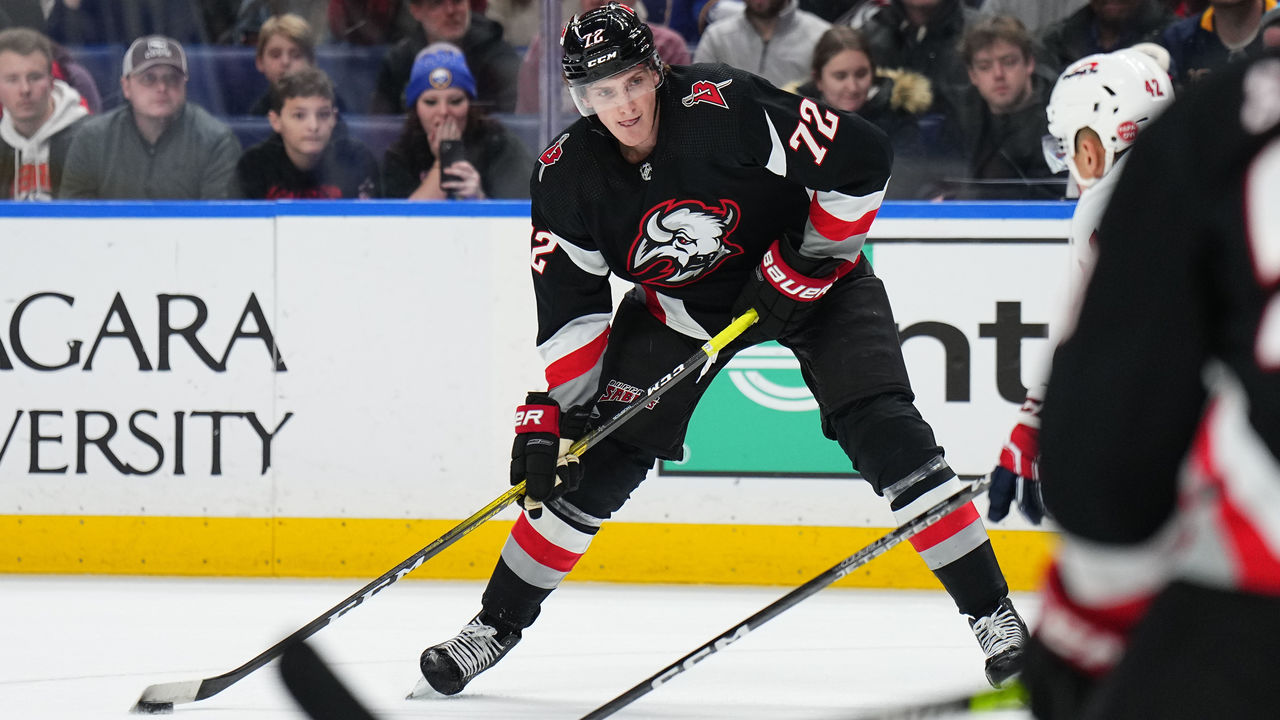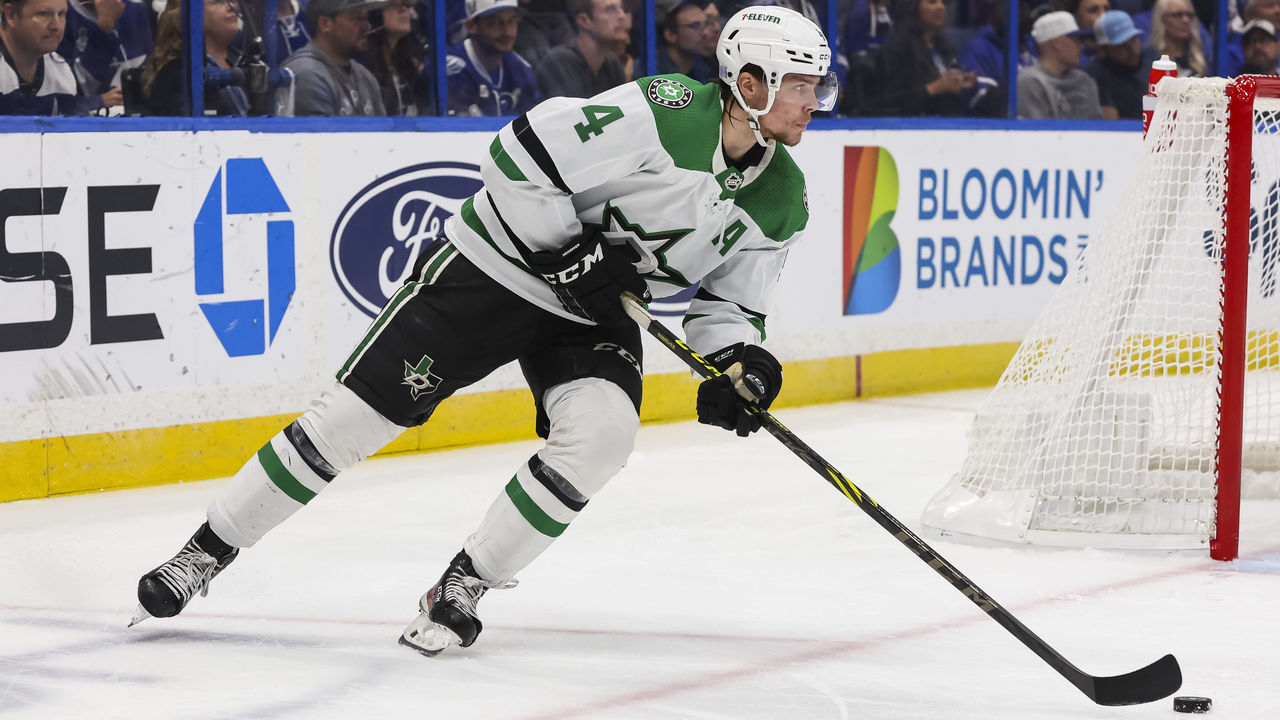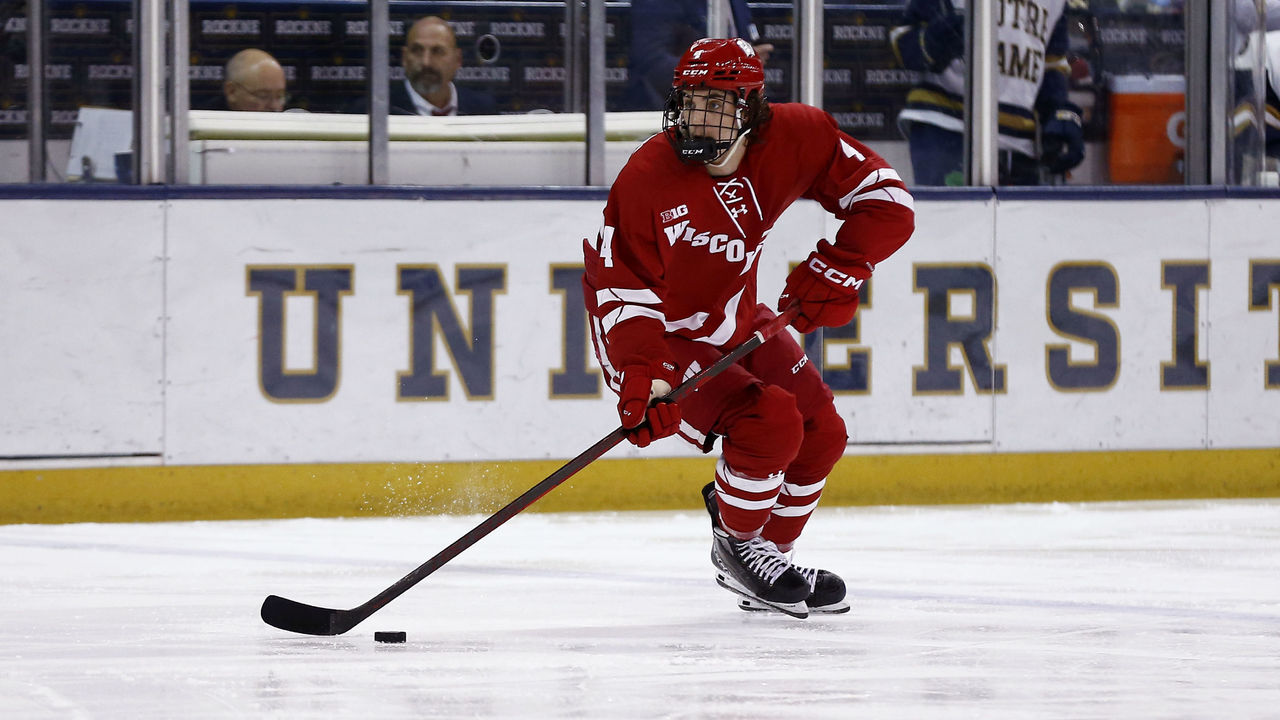'No one fears a defensive team': What's driving hockey's offensive boom
Steve Yzerman, the Hall of Fame center turned mastermind general manager, rarely partakes in media interviews. When he does, the Detroit Red Wings executive tends to play his cards close to his chest.
That said, if the topic is right, he may share a pearl of wisdom with the world.
Take his appearance on a national TV broadcast in late November. Vancouver Canucks head coach Rick Tocchet, then an analyst for TNT, asked Yzerman about the astounding number of blown leads during the 2022-23 season.
"Yeah," Yzerman replied. "I wouldn't say I have a real scientific answer. But I think our game - the league, in general - is in a real transition."

In today's NHL, Yzerman continued, the attacking team prioritizes puck possession and motion within the offensive zone. Defensemen activate often, which creates confusion for the defending team and leads to goals against.
"The offensive side of coaching has overtaken the defensive side," the GM added. "Now teams, coaches are going to have to adjust and come up with better defensive techniques or systems to defend a little bit."
Traditionally, hockey coaches have obsessed over defensive structure and habits: backchecking, blocking shots, clogging passing lanes, battling along the boards, closing gaps, and clearing the front of the net. It's ingrained in coaches' collective identity to care deeply about defensive details.
With the NHL plunging deeper into an era of offensive dominance, where league-wide scoring continues to hover well above six goals per game, how are coaches adapting? How much credit do coaches deserve for the uptick?
theScore recently asked eight coaches - four currently running NHL benches and four with loads of experience in lower leagues - those exact questions.
Here's what we learned.
The modern mindset

As of Tuesday morning, the average NHL game this season featured 6.38 goals. If that rate holds until the end of the regular season, 2022-23 will count as the highest-scoring campaign since 1993-94, according to Hockey Reference.
"We want to score 10. Every night," Carolina Hurricanes head coach Rod Brind'Amour told theScore over All-Star Weekend. "Now, we don't want to give up any, but we're trying to score 10. I think where the game's really improved in that regard is that (most NHL) coaches think the same way now."
This season's power plays have been converting on 21.4% of all opportunities - an absurd rate reached only in the wide-open 1970s and '80s. Moreover, multi-goal, third-period comebacks have suddenly become fairly common, with 2022-23 having already set the record for most in a single campaign (53).
This chaotic, offense-first product is a continuation of last season when goals per game rose to 6.28 from 5.88 in 2020-21 and 6.04 in 2019-20. Power-play success rate rose to 20.6% from 19.8% in '20-21 and 20.0% in '19-20.
"The one thing I know for certain is that no one fears a defensive team," Buffalo Sabres head coach Don Granato said when asked about his overarching philosophy. "Coaches and teams have to strategize to put people on their heels when they know you can score, and that commands respect."

Granato, whose team ranks third in goals for per contest this season, said he doesn't diminish or overlook the defensive side of the game. In his mind, Buffalo's defensive issues (27th in goals against per game) can be traced back to a youthful lineup making too many poor decisions with the puck.
"But yes," Granato said of aggressively pursuing goals, "it is and will be a deliberate focus. Always. It's always been like that with my coaching. Guys want to score, and it's a lot more fun to watch. Fans want to be entertained. So from the outset, yes, a couple of years ago we were dead last in scoring in the NHL. Now we're very close to first in the NHL in scoring, just tiny percentage points away. And that's by design and by effort by our guys."
The uptick in goal scoring can be attributed to all kinds of macro changes over the past decade. The NHL cracked down on slashing and cross-checking. Expansion created roughly 50 new jobs, which means players who previously competed in the minors are now in the NHL. Skaters everywhere gained access to better stick technology while goalie equipment has been slimmed down. Most elite youth players train with skills and skating coaches, raising the baseline of offensive ability at all ages and levels.
"We have better athletes all across the board," Brind'Amour said. "They've pushed the bar up, and now everyone's getting better and faster and stronger and more skilled because they've worked on it 24/7 since they were 10 years old."
Added Dallas Stars head coach Pete DeBoer: "We've got so much young talent on rosters now that you didn't have before. You used to put out your third- and fourth-line checkers to lock down games as early as the second period if you've got a lead. Now you've got young, skilled players looking to score the entire game. That's why you see the swings. ... No lead is safe."

Coaches pull goalies earlier and more often, putting extra pucks in both nets. Power plays have been optimized by using four or five forwards, loading up the first unit with three or four deadly shooting threats, and disorienting the penalty kill with passes from the bumper spot and goal lines.
DeBoer, who's coached five different NHL clubs, noted that pro bench bosses are taking advantage of statistical and video analysis "more than they ever have in the history of the game" - especially during special-teams meetings.
"Players are a lot more inquisitive now. They do want to know the why and how things work," said Danton Cole, who's coached pro, junior, and college players for more than two decades, most recently at Michigan State. "The analytics of the game can help you offensively because you can show players how to attack through the middle of the ice or get off the wall in the offensive zone."
Teams have also altered how they operate at five-on-five - more carry-in zone entries, higher shot volume from the slot area, and a preference for east-west passing, just to name a few trends. The focus on maintaining possession and generating quality looks shows clearly in the five-on-five high-danger data:
James Richmond, GM and coach of the OHL's Mississauga Steelheads, said it's vitally important to frame defensive play in an incentive-rich way at the junior level. "The more we can pressure the player with the puck, the better chance we get it back and get it back soon," he tells his players.
"Every good junior player comes up through minor hockey having the puck a lot. That's not a new thing, but it's true," Richmond said. "As you go up levels, the puck is on your stick less and less. So, the goal is to get the puck back.
"How do we do that?" he continued. "We don't send five guys after the puck carrier, like a team of six-year-olds. There are certain areas you can occupy on the ice to make the puck carrier feel uncomfortable. You ideally want that player to pass or shoot it before they're really ready to pass or shoot. And if you can get somebody to do something out of their comfort zone, there's a good chance they're going to make a mistake, and you'll get the puck back."
Counterstriking - the act of turning defense into offense in the blink of an eye - is usually what follows a turnover in today's high-paced game. And you can't beat instant gratification in 2023.

It helps that modern defensemen are eager to start or join the attack to overwhelm the opposition. The stay-at-home archetype, which favors pucks off the glass and brute physicality over carry-out zone exits and effective stick checking, is essentially extinct. The job description for blue-liners has been rewritten for mobility, creativity, and problem-solving ability.
"Players now are interchangeable," said DeBoer, citing how frequently defensemen act like forwards and how often forwards must cover for them.
Ben Simon of the AHL's Grand Rapids Griffins maintains "the old adage of 'your best defense is a good offense' is so relevant" for today's players and coaches. Everybody's eager to push play in the right direction - with numbers.
"I have seen - probably in the last four or five years - defensemen being way more active in really all aspects offensively, whether that's off a faceoff or off the rush or off a breakout or off sustained O-zone play," Simon said. "They're coming through a hockey system now where they're being encouraged to be more involved with the puck. And there's a natural correlation with coaching."
The extreme approach

Creating offense is at the core of the Brooks Bandits' program. The Alberta-based junior A team that helped develop Colorado Avalanche superstar Cale Makar scouts offensive dynamos almost exclusively, centers recruiting pitches and practice drills around scoring, and plays a high-risk brand of hockey.
It's all part of "flipping the script" inside teenage players' heads.
"There aren't really any players who get excited about defending," longtime Brooks GM and head coach Ryan Papaioannou said of the "No. 1 challenge" in junior. "Instead of trying to fight that battle head-on," he added, "we just start on the offensive side, get everybody to buy into that, then go from there."
The Stanley Cup-winning Chicago Blackhawks teams of the 2010s inspired Papaioannou to go all-in on offense. He loved how Chicago's defensemen defied tradition by always being on the move and finding ways to get involved in the offensive zone. The Bandits covet defensemen with strong skating, high intelligence, and puck skills. Size and physicality are far down the priority list.

Brooks' emphasis on offense is partially based on the widely held belief that a team can achieve defensively sound hockey through old-fashioned hard work. "I think 85% of playing defense is just straight-up effort," Papaioannou said.
The program graduated Makar, arguably the world's best defenseman (and the best prototype for the playing style), and Columbus Blue Jackets first-rounder Corson Ceulemans to the NCAA. This year's Bandits, who won 53 of 60 regular-season games, are chasing a third consecutive junior A national title.
"To try and do this in the NHL - at the scale we are - might be a little extreme," Papaioannou said. "The players you turn the puck over to in the NHL are going to burn you. You'd get eaten up pretty good most nights. But you could find a balance and bring up the level of offense in many different ways."
The inevitable counterpunch
As Yzerman suggested during his TNT interview in November, a market correction will come at some point. Coaches will try to outsmart each other, and, perhaps within only a few years, NHL goal rates will stop trending up.
There are several factors out of coaches' control - such as changing officiating standards and the young player's mindset - but they still hold immense power. Look no further than three-on-three overtime, where the chaotic action from early seasons has slowly been replaced by a coaching chess match.
"There's always a counterpunch to these trends. Coaches will figure out a way to combat this latest jump in scoring, even if it's reined in just a little," said Cole, who started coaching in the middle of the so-called dead-puck era.

Richmond, who runs the OHL's Steelheads, likens hockey tactics to fashion.
"It goes out of style, and it comes back, it goes, and it comes back. Why does it leave? Well, people get tired of it," Richmond said, chuckling. "In hockey, when you're always doing something over and over to create scoring chances, the other team sees it and builds a defensive scheme against it. Then it becomes harder again. So, it'll slow down and then come back again."
Every spring provides a temporary shift. In the playoffs, games tighten up as players fight for every inch of ice, officials put their whistles away, and coaches can key in on the opposition during a series. While the offensive mindset doesn't vanish, defensive structure certainly takes over.
"I think it's in coaches' DNA. We'll try and coach the skill out of the game as much as we can," DeBoer said with a hearty laugh. "We'll try and defend. Come playoff time, you see everyone else buckle down."
Vegas Golden Knights head coach Bruce Cassidy recalled hearing Darryl Sutter of the Calgary Flames remark that the NHL has transitioned from being a 3-2 league to a 4-3 league. All things being equal, it's a nightly race to four goals.
That's fine with Cassidy. The NHL is in the entertainment business. Goals sell tickets. But he believes an all-offense approach would devalue the product.
"I just don't want it to become a 6-5 league," Cassidy said. "I don't think that's great for hockey. But I guess, until that happens, we'll see."
John Matisz is theScore's senior NHL writer. Follow John on Twitter (@MatiszJohn) or contact him via email ([email protected]).